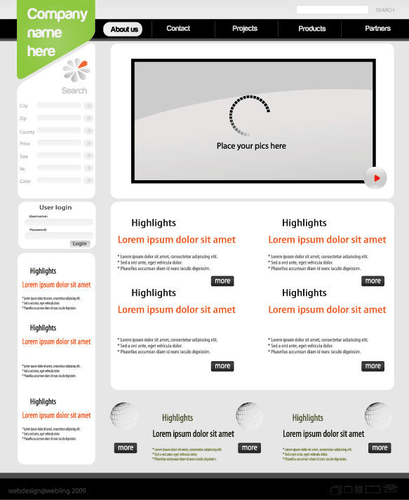
The benefits of specialization can often be achieved with the addition of just one more person, either full-time or part-time, assigned to IOLTA reconciliation. Trust accounting refers to the practice of tracking client funds that are held in a trust and ensuring they are kept separate from firm funds. Client funds include settlement funds, advanced costs, court fees, bookkeeping and payroll services and retainer fees. Firms are expected to maintain meticulous and accurate records of all cash flow to ensure client funds are properly used. By linking trust accounting with case billing, law firms can reduce administrative work and ensure that all client funds are properly allocated. One of the most significant advantages of using case management software for trust accounting is its ability to automate record keeping.
- Your trust account management process needs to include a mechanism to flag or notify those in an oversight capacity of an out-of-balance condition.
- For easy-to-use trust accounting with an easy and affordable time and billing solution, please contact us.
- For example, when a lawyer accepts advanced fees for services not yet rendered and doesn’t deposit these fees directly into a trust account—that’s misappropriation.
- Maintaining confidentiality and privacy in trust accounting and reporting is crucial to protect sensitive information related to trust beneficiaries, assets, and transactions.
- While all licensees must safeguard and protect the money and property of others entrusted to them, the ultimate responsibility to oversee and safeguard the monies of others passing through the office rests with the BIC.
National Savings Month: Top 5 Money-Saving Tips for South African SMEs
We allocate principal to income each year, as needed, in order to achieve our 3.5% payout policy. This smooths out distributions and better allows the beneficiaries to manage their cash flow. Your trust account management process needs to include a mechanism to flag or notify those in an oversight capacity of an out-of-balance condition. Proper escalation and awareness allow small problems to be addressed in a timely manner before they become big ones. In addition to defining roles and outcomes, it is necessary to define proper segregation of duties. The simplest framework to apply is to designate a “Preparer” and an “Approver” for management of your 3-way reconciliation.
- These accounts must be clearly identified and managed separately from any other accounts to prevent commingling of funds.
- A&M trusts offer a balanced approach to providing for minor beneficiaries, combining flexibility for trustees with structured support for beneficiaries, thereby playing a crucial role in effective estate planning.
- Visit stlouistrust.com to explore how the firm manages complexity with unmatched expertise and focuses on Family, Always.
- As a complete practice management platform, TaxDome enables you to automate entire workflows.
- Remember that the money in your firm’s trust account does not belong to you or your practice.
What is your risk tolerance?
To address these issues, establish a robust record-keeping system that tracks all transactions meticulously. Implement a schedule for regular deposits to avoid delays and ensure compliance with regulations. Adhering to trust accounting best practices ensures transparency, compliance, and client trust in your property management services.
Accountability
- These accounts are essential for separating client funds from your business’s operational funds, ensuring transparency and compliance with legal requirements.
- These trusts facilitate the accumulation of income and capital, providing financial support and ensuring that assets are appropriately allocated over time.
- Regular monitoring and review of trust accounts help ensure accuracy, compliance, and effective management.
- This practice is prevalent in the legal, real estate, and financial professions, when client funds, settlement, or escrow payments are being managed by professionals.
- SurePoint® Technologies is the leading provider of award-winning software that improves workflow and maximizes financial performance and profitability for law firms.
- The key principles of trust accounting and reporting include fiduciary responsibility, accurate record-keeping, segregation of trust funds, and compliance with legal and regulatory requirements.
This process involves detailed matching of bank statements with internal records and regular verification of client balances against trust accounts. Implementing internal controls in trust accounting and reporting processes can help prevent fraud, errors, and mismanagement. Deposits into trust accounts typically include income from trust assets, contributions from the trust grantor, or other sources of trust revenue. Proper documentation and record-keeping are necessary to ensure accurate tracking of deposits. Accumulation and Maintenance Trusts (A&M trusts) are essential structures in estate planning, designed to manage and distribute assets for beneficiaries until they reach a specified age. These trusts facilitate the accumulation of income and capital, providing financial support and ensuring that assets are appropriately allocated over time.
Client funds must be held in a trust account until you are authorized to release them. This could be because you have legally earned the funds by delivering certain services, or because the client explicitly requests that you do. Make sure the details of when funds can be disbursed are set out in the terms of the fund account.

Generic accounting programs that produce generic invoices are NOT your friends if trust funds are involved. Providing detailed billing statements helps clients understand how their funds are being used and reassures them that their money is being managed properly. Billing statements should be clear, comprehensive, and easy for clients to understand, showing all transactions and ending balances in their trust accounts. Understanding these components is key to effective trust management and ensuring compliance with legal requirements. Next, we’ll dive into common mistakes and best practices in trust accounting. Dedicated trust management software can automate account reconciliations, flag issues, and unearned revenue help ensure legal compliance and audibility.


Standards, requirements, and best practices around the legal trust account management. In addition to maintaining a trust account ledger for the entire firm, law firms should also keep individual ledgers for each client’s trust account. Each client trust ledger should record all deposits and disbursements to that specific client. It is also suggested that you maintain an individual ledger for each client’s trust account funds.

Case management software also gives law firms the ability to generate real-time reports, providing up-to-date information on trust account balances and client trust ledgers. Attorneys can quickly access the details of any trust transaction, making it easier to respond to client inquiries or internal audits. Maintaining attorney trust account accurate and detailed records is essential for trust accounting best practices. Law firms should document every transaction involving client funds, including deposits, disbursements, and any adjustments.
By following the steps outlined in this guide, property managers can set up and maintain trust accounts that safeguard client funds and contribute to the long-term success of their property management business. Effective trust account management forms the cornerstone of a successful legal practice. By implementing robust systems, maintaining regular reconciliation practices, and leveraging appropriate technology, practitioners can ensure compliance while building client trust. Remember that trust accounting isn’t just about meeting regulatory requirements—it’s about maintaining the highest standards of professional practice and client service. They are not only your clients’ most valuable assets but are also restricted in the way they should be handled.

